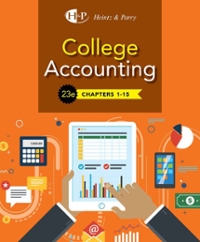mm Resource mm (URSB) manufactures three main products, using broadly the same production plant for each. Over the years, the company has been practicing the apportioning of the indirect cost using the conventional product costing system. Lately, the company has proposed to switch over to implement an activity based costing (ABC) system to manage its indirect cost, because the management foresees that ABC system can help to bring about eliminating waste and removing non-valued added expenses from the total product costs. Details of the three products for typical period are: Hours per unit Direct 1Volume in material cost units per unit Labor hours Machine Hour RM Units Product L 0.4 hour 1.5 hour 40 800 Product M 1.2 hour 2.0 hour 35 2,000 Product N 1.5 hour 3.0 hour 48 8,000 Direct labor costs RME per hour and production overheads are traditionally absorbed on a machine hour basis. The rate for the period is RM30 per machine hour. Total production overheads are estimated at RM876,000. Further analysis is required to apply activity based costing system, which would show the total production overheads as follows: Activities Percentage of overhead use Cost driver Costs relating to set-ups 25 No. of setup Costs relating to machinery 30 Machine hour Costs relating to material 25 No. of material handling movement Costs relating to inspection 20 No. of inspection Total production overheads 10U% The following activity volumes are associated with the product line for the period as a whole. Total activities for the period: Number of set ups Number of material Number of movements inspections m m The management wants to highlight the difference between how each system will arrive at the expected cost per unit under the conventional method and the ABC system respectively. Required: a. Based on the above information, calculate the following; i. Calculate the cost per unit for period using the conventional approach. (5 marks) ii. Calculate the ABC costing to determine cost per unit. (8 marks) iii. Comments on your observation between calculation in i, and ii. above. (4 marks) b. Critically explain, what do you know about cost drivers in activity based costing and what is the role of cost drivers in an activity based costing. (4 marks) Why do product-costing systems based on a single volume based cost driver tend to overcost high volume products? What undesirable strategic effects can such distortion of products costs have? (4 marks)










